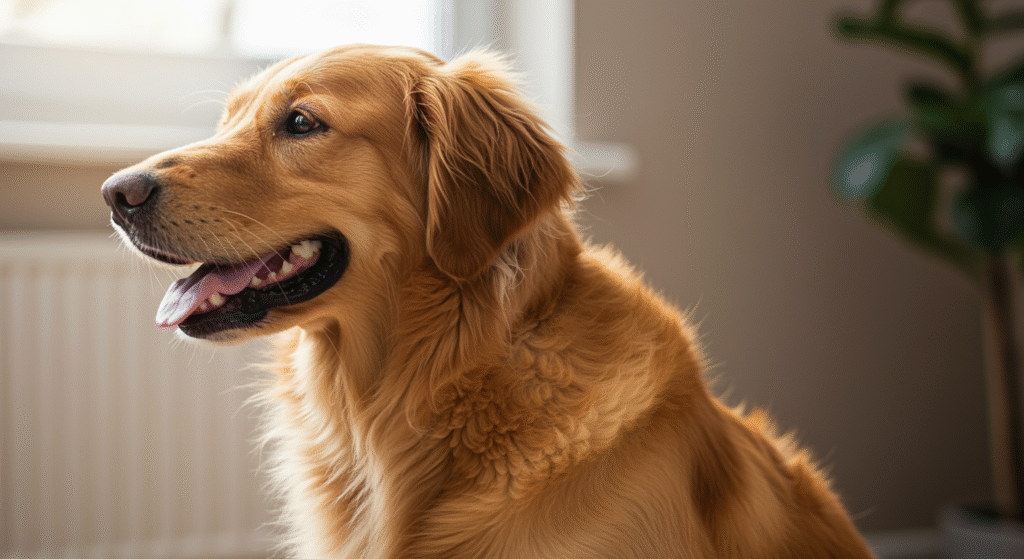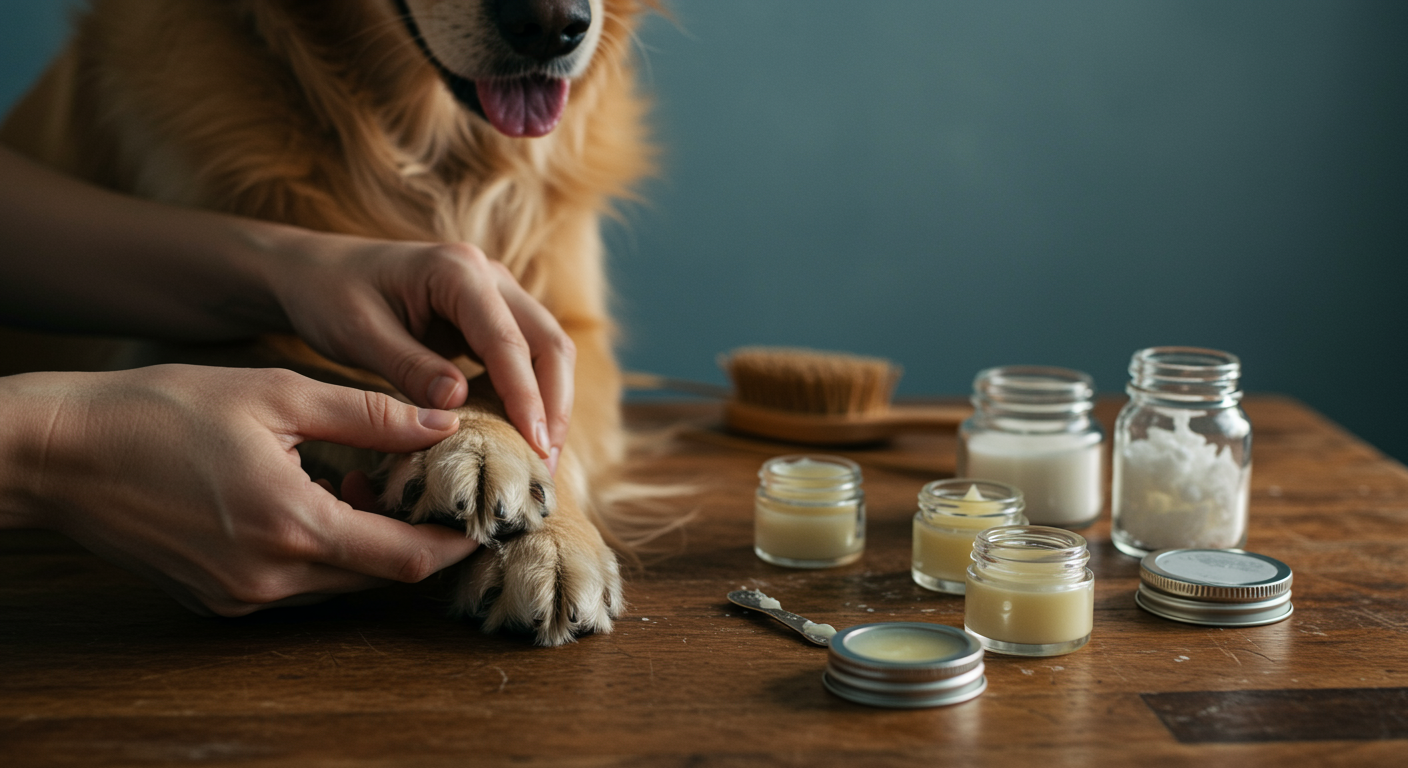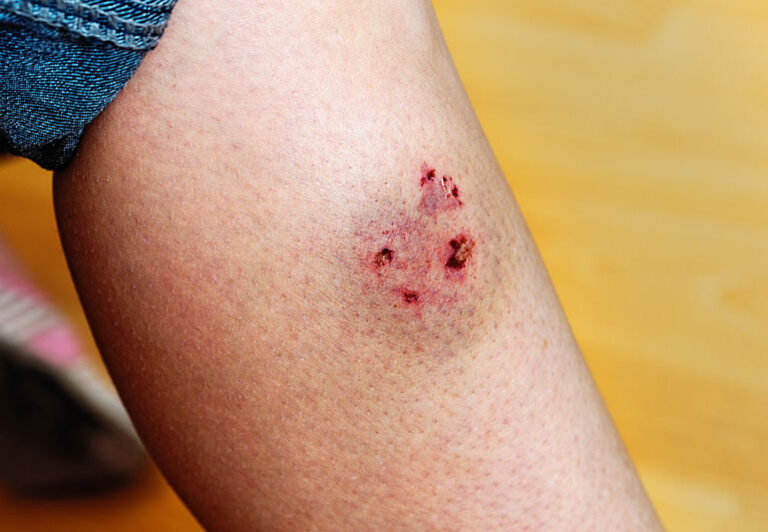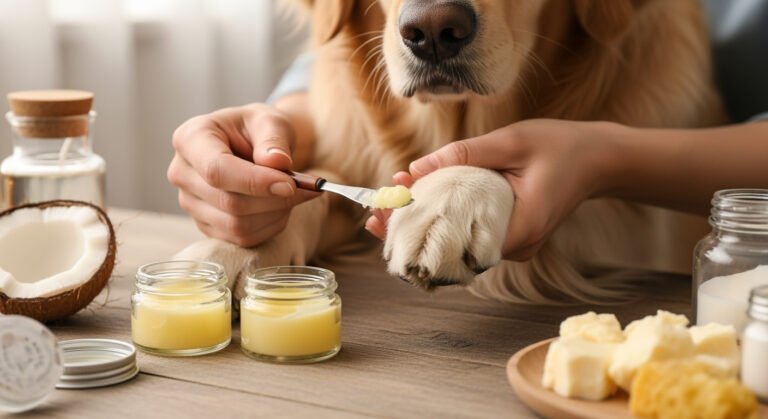Your Dog’s Hot Spots Are Getting Worse – Here’s How to Fix Them at Home
When you notice your furry friend obsessively licking a red, inflamed patch of skin, you’re likely dealing with a hot spot. These painful bacterial infections can appear overnight and spread rapidly if left untreated. The good news? Many dog hot spots can be successfully treated at home with the right approach and careful monitoring.
Hot spots, medically known as acute moist dermatitis, affect thousands of dogs every year. They’re especially common during warm, humid months when moisture gets trapped in your dog’s coat. While severe cases require veterinary attention, catching them early means you can often provide effective home treatment that gets your pup back to their happy, comfortable self.
What Exactly Are Dog Hot Spots?
Dog hot spots are areas of inflamed, infected skin that develop when bacteria multiply in warm, moist conditions. They typically start as small irritated patches but can grow to several inches in diameter within hours. The affected area becomes red, swollen, and often oozes a clear or yellowish discharge.

Dr. Sarah Mitchell, DVM: “Hot spots are one of the most common summer skin conditions I see in my practice. The key to successful home treatment is catching them early and keeping the area clean and dry. If you notice your dog constantly licking or scratching one spot, examine it immediately.”
Common symptoms of hot spots include:
- Red, inflamed skin that’s warm to the touch
- Hair loss in the affected area
- Oozing or wet appearance
- Strong, unpleasant odor
- Excessive licking, scratching, or chewing at the spot
- Pain when the area is touched
Why Do Dogs Get Hot Spots?
Understanding what causes hot spots helps prevent future occurrences. These painful skin infections develop when your dog’s natural skin barrier is compromised, allowing bacteria to flourish. Several factors can trigger this process:
Moisture and Heat: Trapped moisture from swimming, bathing, or humid weather creates the perfect breeding ground for bacteria. Dogs with thick, dense coats are particularly susceptible.
Allergies: Environmental allergens, food sensitivities, and flea bites can cause itching that leads to excessive scratching and skin damage.
Poor Grooming: Matted fur traps moisture and debris against the skin, while infrequent brushing allows dead hair and dirt to accumulate.
Underlying Skin Conditions: Dogs with sensitive skin, dermatitis, or other skin disorders are more prone to developing hot spots.
5 Effective Home Remedies for Dog Hot Spots
1. Clean and Trim the Affected Area
The first step in hot spot treatment at home is creating a clean, dry environment for healing. Gently trim the hair around the hot spot using blunt-tip scissors, extending about an inch beyond the visible irritation. This allows air circulation and prevents hair from sticking to the wound.
Clean the area with warm saline solution (1 teaspoon salt in 1 cup warm water) or chlorhexidine solution diluted according to package directions. Pat dry with a clean cloth – never rub, as this can further irritate the skin.
Pet Grooming Expert Lisa Thompson: “When trimming around hot spots, always use clean, sharp scissors and work slowly. Your dog may be sensitive in this area, so take breaks if they seem uncomfortable. The goal is to expose the skin to air while removing any matted or contaminated hair.”
2. Apply Natural Antiseptic Solutions
Once the area is clean and dry, apply a natural antiseptic to prevent bacterial growth. Several dog-safe options work effectively:
Diluted Apple Cider Vinegar: Mix equal parts raw, unfiltered apple cider vinegar with water. The acidic environment helps kill bacteria while soothing inflamed skin.
Green Tea Compress: Brew strong green tea, let it cool completely, then apply with a clean cloth. Green tea’s natural antimicrobial properties help fight infection.
Witch Hazel: This natural astringent helps dry out the hot spot while reducing inflammation. Use alcohol-free witch hazel to avoid further irritation.
Apply your chosen solution 2-3 times daily using a clean cloth or cotton pad. Always allow the area to air dry completely between applications.
3. Create a Protective Barrier
Preventing your dog from licking or scratching the hot spot is crucial for healing. Constant moisture from licking will only make the condition worse and can introduce new bacteria to the area.
Use an Elizabethan collar (cone) or inflatable recovery collar to keep your dog from reaching the affected area. For hot spots on the body, a light, breathable wrap or dog t-shirt can provide protection while allowing air circulation.
Veterinary Behaviorist Dr. James Rodriguez: “Many dogs initially resist wearing a cone, but it’s essential for healing. Make the experience positive by offering treats and praise when they wear it. Most dogs adapt within 24-48 hours, and the hot spot will heal much faster without constant licking.”
4. Use Cooling and Soothing Treatments
Hot spots are painful and itchy, so providing relief while they heal improves your dog’s comfort and prevents further self-trauma.
Cold Compress: Apply a clean, damp cloth chilled in the refrigerator for 5-10 minutes several times daily. The cold helps reduce inflammation and provides temporary itch relief.
Oatmeal Paste: Mix finely ground oatmeal with water to create a thick paste. Apply to the hot spot for 10 minutes before gently rinsing with cool water. Oatmeal contains natural compounds that soothe irritated skin.
Coconut Oil: Once the acute inflammation subsides (usually after 2-3 days), a small amount of organic coconut oil can help moisturize healing skin. Use sparingly, as too much can trap moisture.
5. Monitor and Maintain Proper Hygiene
Successful hot spot treatment requires consistent monitoring and care. Check the area twice daily for signs of improvement or worsening.
Signs of healing include:
- Reduced redness and swelling
- Drying of any discharge
- Formation of a scab (don’t pick at it!)
- Decreased odor
- Less scratching or licking behavior
Keep the area clean by gently cleaning with saline solution daily. Avoid over-cleaning, which can irritate healing tissue. Most hot spots show significant improvement within 3-5 days of consistent home treatment.
When to Seek Veterinary Care
While many hot spots respond well to home treatment, some situations require professional veterinary attention. Contact your vet immediately if:
- The hot spot is larger than a quarter or continues spreading
- You notice multiple hot spots on your dog
- The area shows no improvement after 3 days of consistent treatment
- Your dog develops fever, lethargy, or loss of appetite
- The discharge becomes thick, green, or foul-smelling
- The area appears to be getting worse despite treatment
Emergency Veterinarian Dr. Amanda Foster: “Trust your instincts as a pet owner. If something doesn’t look or smell right, or if your dog seems increasingly uncomfortable, don’t hesitate to call your vet. Early intervention can prevent minor hot spots from becoming serious infections.”
Preventing Future Hot Spots
Prevention is always better than treatment when it comes to dog hot spots. Several proactive steps can significantly reduce your dog’s risk:
Regular Grooming: Brush your dog daily, especially during shedding seasons. This removes dead hair, prevents matting, and allows you to spot potential problems early.
Keep Your Dog Dry: Thoroughly dry your dog after baths, swimming, or walks in the rain. Pay special attention to areas where moisture can get trapped, like under the arms, between toes, and around the ears.
Address Allergies: Work with your vet to identify and manage any underlying allergies that might trigger excessive scratching or licking.
Maintain a Healthy Diet: Proper nutrition supports healthy skin and coat. Look for foods rich in omega-3 fatty acids, which have anti-inflammatory properties.
Regular Flea Prevention: Use veterinarian-recommended flea prevention products year-round, as flea bites are a common trigger for hot spots.
What NOT to Use on Dog Hot Spots
While many home remedies can help, some common household products can actually make hot spots worse:
- Hydrogen Peroxide: While it kills bacteria, it also damages healthy tissue and can slow healing
- Alcohol: Extremely painful and can cause chemical burns on inflamed skin
- Human Topical Medications: Many contain ingredients toxic to dogs
- Essential Oils: Can cause allergic reactions and may be toxic if licked
- Bandages or Tape: These trap moisture and can worsen the condition
Veterinary Dermatologist Dr. Michelle Chang: “I see many well-intentioned pet owners who accidentally worsen hot spots by using inappropriate treatments. When in doubt, stick to gentle, dog-safe products and consult with your veterinarian before trying new remedies.”
Your Dog’s Comfort Comes First
Treating dog hot spots at home can be highly effective when caught early and managed properly. The key is acting quickly, maintaining consistent care, and knowing when professional help is needed. Remember that your dog’s comfort and well-being should always be the priority.
Most hot spots will show improvement within 48-72 hours of starting treatment. With patience, consistency, and the right approach, you can help your furry friend heal comfortably at home while strengthening the bond between you.
Keep these home remedies in your pet care toolkit, but never hesitate to contact your veterinarian if you’re concerned about your dog’s condition. Your quick action and loving care will have your pup back to their playful, happy self in no time.






